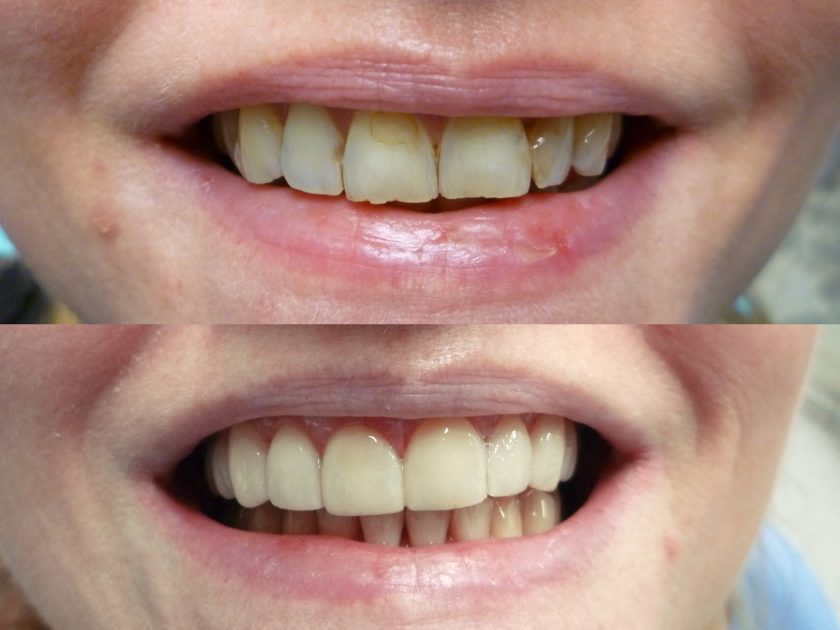Dental Veneers
Dental veneers are ultra-thin shells made up of ceramic (porcelain) or composite resin. These veneers can be bonded to the front teeth. They produce a much more conservative approach to changing a tooth’s color, size or shape. The bonding process of the veneers may or may not require anesthesia. These veneers are not always compulsory for the patient. Veneers are the best alternative for improving the looks of the front teeth.
What kind of problem does Dental Veneer fix?
- Discoloration of the tooth – Maybe because of fluorosis, tetracycline stain, large filling or root canal treatment.
- Teeth that are worn down due to attrition
- Crooked or broken teeth
- Teeth that are misaligned, uneven, or irregularly shaped
- To fill the gaps between two adjacent teeth

Types of dental veneers
Following materials are being used to fabricate dental veneers
- Ceramic
- Lithium di-silicate (it is very thin and relatively very strong porcelain)
- Da Vinci (Very thin porcelain)
- Mac (High resistance to stains and relatively strong)
- Acrylic (No longer in use for quality work)
- Composite
- Nano Ceramic
Veneers are made up of composite or porcelain. Your dental practitioner can assist you to opt for the material that’s best for you. Here we are going to discuss the benefits of both materials:
Porcelain Veneers
- More enamel needs to be remove than composite veneers but less than crown
- They have a natural-looking
surfac - It
doesnt stain easliy - Strong and long-lasting
Composite resin veneers
- Less tooth structure needs to be remove
- Can be done in just one visit
- Easy to fix if they get damaged
- Cost less than porcelain veneers
Advantage and disadvantage of dental veneers

Advantage
- These are the best to provide the natural and
asthetic - Veneers are the conservative option to change the color size and form of the tooth
- It requires less preparation of tooth than the dental crown.
Disadvantage
- Irreversible technique
- A tooth can be sensitive toward hot and cold food and drinks after preparation for veneers
- Not repairable
- can not be used in the back tooth as they cant withstand the load
- Those who have the habit of clenching and grinding teeth, it can not be used.

How long do Dental Veneers last ?
Generally, veneers last between 7 and 15 years. After this time, the veneers would need to be replaced.
Maintenace of a veneer
Maintaining porcelain veneers is quite simple: Treat them as you would your original teeth, with routine brushing and flossing. Use non-abrasive fluoride toothpaste, which may be advised by your dentist.
One week after your veneers are placed, you’ll be needed to come back to the dental office. This visit will be for a follow-up and evaluation. In this visit the dental practitioner will see how your mouth is reacting to the veneers. Even though you’re feeling the veneers are a success, this appointment is important to your future oral health.
If you’ve got a habit of grinding or clenching your teeth, your dental practitioner may fit you with a nightguard so you do not damage your veneers.
You should also come to your dental practitioner for normal professional maintenance as a result of porcelain veneers should be polished with a specially formulated, non-abrasive paste.
Alternatives
Metal-ceramic crown, composite resin bonding, cosmetic contouring or orthodontics.
Cost for dental veneers
Treatment cost for veneers depends on which country or part of the country you live in. Generally, in united states, the cost for the dental veneers range from $1000 to $2000 per tooth for porcelain veneers. Composite veneers may cost you in a range of $250 to $1500.
